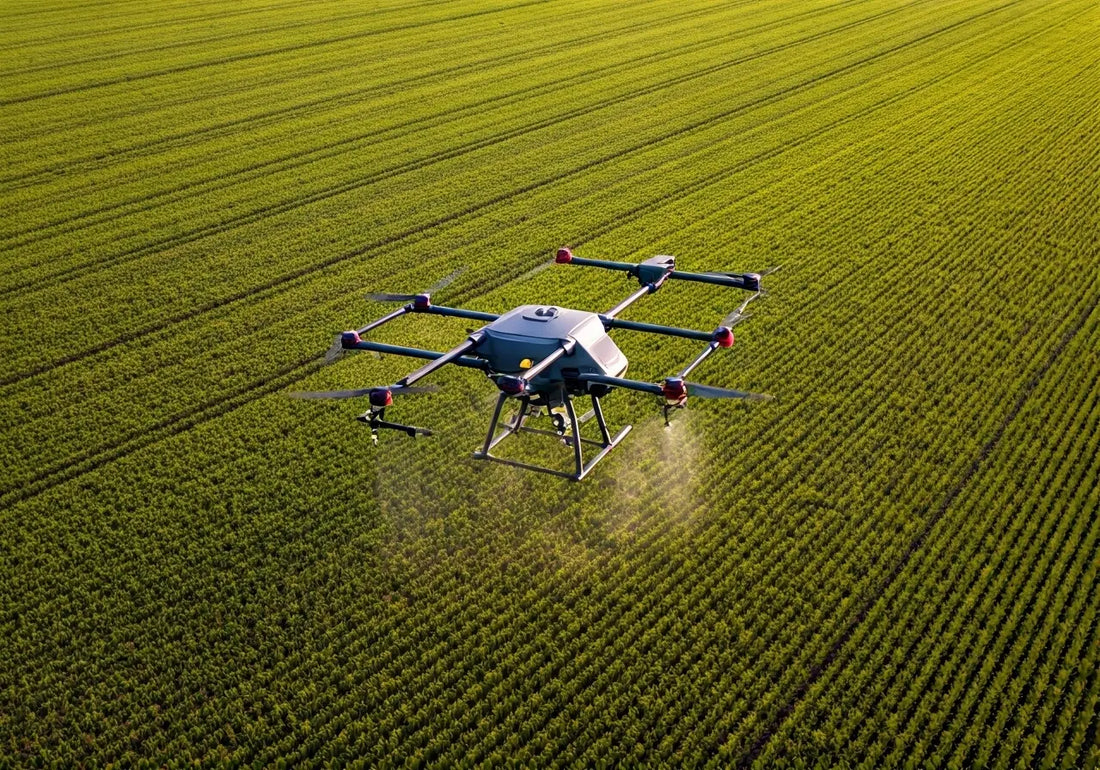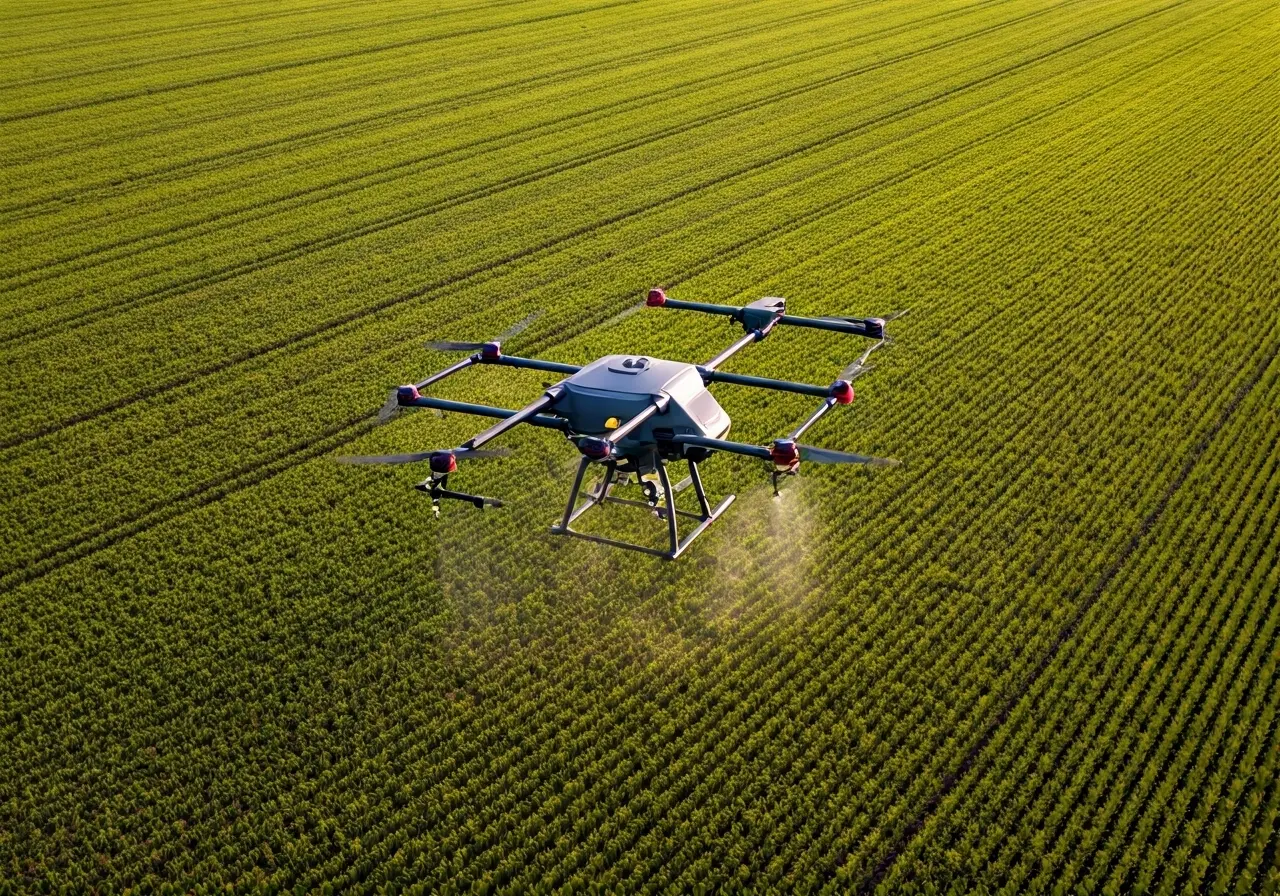
Beginner's Guide to Navigating the DJI Agras Series
Share
If you’re new to the world of drone technology, the DJI Agras Series might seem a bit daunting at first. But don’t worry, in this guide, we’ll break down everything you need to know to get started with these advanced agricultural drones. Let’s dive into the features, applications, and essential tips to help you navigate the DJI Agras Series with confidence.
Understanding the DJI Agras Series
The DJI Agras Series is designed specifically for agricultural use, featuring a range of drones capable of efficiently spraying crops. These drones come equipped with advanced technology and user-friendly software, making them an appealing choice for farmers looking to enhance their productivity.
What sets the DJI Agras Series apart is its integration of cutting-edge technology tailored for precision agriculture. Embedded with GPS and radar-based systems, these drones can navigate fields with pinpoint accuracy, ensuring minimal wastage and maximum yield. By leveraging such technology, the series supports various agricultural operations, including crop monitoring and precise pesticide application.
Notably, these drones also possess the capability to work autonomously or under manual control, thereby offering farmers the flexibility needed during various applications. Such adaptability makes the DJI Agras Series a game-changer in modern farming, catering to both small-scale and large-scale agricultural practices. With advanced navigation capabilities, these drones significantly reduce the time and labor involved in traditional farming methods.
Key Features of the DJI Agras Drones
From multi-rotor design to precision spraying mechanisms, the Agras drones boast features that make them suitable for a variety of farming needs. Learn about their intelligent flight modes, GPS systems, and how these contribute to accurate and effective pesticide dispersion.
A standout characteristic of the DJI Agras is its intelligent flight modes, which include terrain following and obstacle avoidance. These features not only aid in maintaining uniform application rates over uneven terrain but also ensure the safety of the drone by mitigating potential collisions. Additionally, the drones are programmed to follow specific flight paths, maximizing efficiency and coverage during operations.
Another important aspect is the adjustable nozzle system that allows the drones to operate effectively in different environmental conditions, whether in high humidity or dusty fields. This versatility is crucial for maintaining the quality of the sprayed liquid and ensuring that it reaches the plants’ surfaces effectively. Furthermore, the option to store multiple flight records and spraying data enables comprehensive logging and analysis, empowering farmers to make data-driven decisions.
Getting Started: Setting Up Your DJI Agras Drone
Before taking flight, it’s crucial to set up your drone correctly. This section will guide you through the unboxing process, assembling the drone, and installing necessary software updates to ensure your drone is flight-ready.
Start by carefully unboxing each component and checking against the user’s manual to make sure all parts are present. Fixing the propeller blades correctly is vital as they affect the flight stability. The next step involves connecting the battery and powering the drone, followed by syncing it with the remote controller to secure the control link. Updating the firmware is also recommended to incorporate any new functionalities and enhance system reliability.
After setting up the drone physically, it’s time to calibrate its sensors. This process involves adjusting the compass and IMU sensors. Proper calibration ensures that the drone maintains stability during flight and accurately follows predetermined routes. With a subscription to additional DJI services, data syncs seamlessly between devices, making monitoring and data retrieval streamlined.
Best Practices for Safe and Efficient Flight
To make the most out of your DJI Agras, understanding the best practices for operation is key. We’ll cover everything from pre-flight checklists to safe flying conditions and tips for maintaining optimal performance during spraying assignments.
One of the most effective ways to ensure safe operations is by conducting thorough inspections before each flight. Check the drone’s mechanical parts, electrical connections, and software settings to identify any discrepancies or damage. Moreover, familiarize yourself with local drone regulations and acquire necessary permits if required, as compliance is crucial.
Taking weather conditions into account can also make a significant difference in flight outcomes. It’s advisable to avoid flying during high winds or rain, as these conditions can interfere with the drone’s stability and might result in inconsistent spraying paths. Review the forecast before heading out, and as part of post-flight practices, clean the drone, especially focusing on the nozzles, to prevent clogging and maintain optimal spray performance.
Troubleshooting Common Issues
No technology is without its quirks. Here, we highlight some common issues you might encounter with your DJI Agras and provide straightforward solutions to help you keep your drone operating smoothly.
If your drone’s flight path seems erratic, the issue might stem from incorrect settings or calibration errors. Regularly update your drone’s firmware and recalibrate the sensors to prevent such problems. Additionally, signal interference from other electronic devices can impede communication between the controller and drone. Mitigating this involves ensuring sufficient distance from potential sources of interference.
Battery performance can also be a concern, especially in areas with extreme temperatures. Monitoring the battery status and ensuring it’s adequately charged before flights can prevent abrupt shutdowns. Additionally, storing batteries correctly when not in use can prolong their lifespan. By adhering to these practices, you can ensure seamless operations and continue benefiting from the drone’s capabilities.
Wrapping Up Your DJI Agras Journey
Embarking on your journey with the DJI Agras Series doesn’t have to be overwhelming. With a solid understanding of the drone’s features, applications, and safety protocols, you’re well on your way to optimizing your agricultural processes. Keep experimenting and learning, and soon you’ll be navigating your DJI Agras with the same ease and efficiency it brings to your farmlands. Check out more offerings at TJAerosense.

